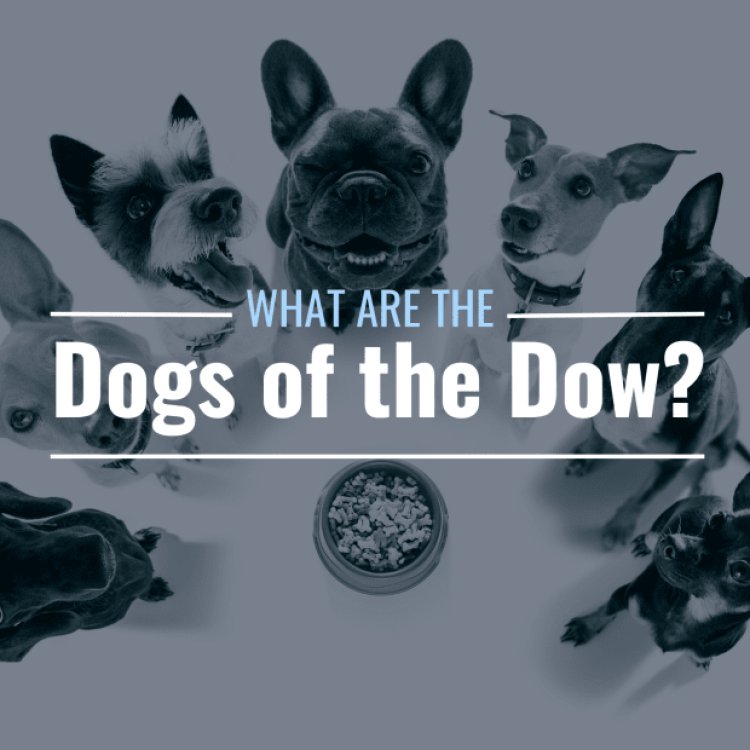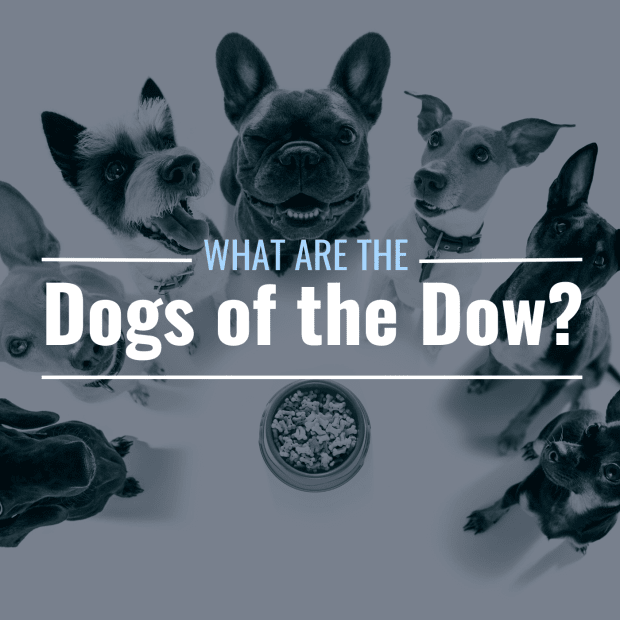What Are the Dogs of the Dow? How Do I Invest in Them?
The Dow Jones Industrial Average, more commonly known as “the Dow,” is an American stock market index made up of 30 large-cap companies. These companies are also known as blue chips because they are well-established with a long history of consistent growth and earnings. They are the household ...


Damedeeso; Canva
The Dow Jones Industrial Average, more commonly known as “the Dow,” is an American stock market index made up of 30 large-cap companies. These companies are also known as blue chips because they are well-established with a long history of consistent growth and earnings.
They are the household names we all recognize, like Coca-Cola and Apple, and because they’ve been around for a while, they usually don’t reinvest all of their profits back into their business; rather, they distribute some of them to shareholders in the form of dividends.
What Are the Dogs of the Dow?
“Dogs of the Dow” is more than just a nickname—it’s also an investment strategy that utilizes the 10 biggest dividend-yielding companies in the Dow Jones Industrial Average. The strategy aims to beat the returns of the DJIA itself by investing in only its top 10 companies by dividend yield each year.
Since the Dow is often referred to as a barometer for the U.S. stock market in general (because when it’s up, it’s said the markets are doing well, and vice versa), it’s no surprise that investors have created a strategy that taps into key Dow components—because these are some of the biggest and most stable companies trading on Wall Street.
Who Created the Dogs of the Dow? What Does the Dogs of the Dow Strategy Entail?
The idea behind the Dogs of the Dow came from a writer and money manager named Michael O’Higgins.
In his 1991 book, Beating the Dow, O’Higgins detailed a contrarian market strategy: If investors selected the ten Dow components with the highest dividend yields, and then invested only in these 10 components each year (rebalancing their portfolios at the start of a new year), they could often beat the performance of the Dow itself.
The Dow’s top dividend yielders didn’t get that way by chance, O’Higgins surmised.Instead, there was some reason—such as a negative news report, an earnings miss, or simply the bottom portion of a business cycle—that caused these companies to raise their dividends, effectively putting them in the “doghouse.”
But one man’s trash is often another treasure, and while these components were trading below their intrinsic value, that also gave them plenty of room over the course of the year for growth. Savvy investors who understood this could buy shares at a temporary discount—and enjoy a handsome dividend to boot.
How Does the Dogs of the Dow Strategy Work?
Here’s the strategy in a nutshell:
The Dogs of the Dow are the Dow’s 10 highest dividend-yielding stocks as listed after the market close on the last trading day of the year.On the first trading day of the next year, you would invest evenly in all 10 Dogs. That means if you had $10,000 to invest, you would allocate $1,000 to each.The strategy also requires investors to sell those stocks that are no longer considered Dogs and reinvest their proceeds in the 10 current Dogs of the Dow each year.
What Are the Current Dogs of the Dow?
The following are the Dogs of the Dow as of thew beginning of 2023.
How Has the Dogs of the Dow Strategy Performed?
According to data from the Dogs of the Dow website, which has tracked the strategy since 2000, the Dogs of the Dow have outperformed the Dow, the S&P 500, and even index funds like Vanguard 500 and Fidelity Magellan.
In more recent times, charting its performance between 2015–2019 illustrates that the Dogs of the Dow strategy has outperformed the Dow Jones Industrial Average and its benchmarks in some years while underperforming it in others:
That being said, 2019 in particular was a banner year for growth stocks, so this strategy may work better during those market years that favor value-based investment strategies.
What Are Some Risks Associated with the Dogs of the Dow Strategy?
Every investment strategy offers its fair share of risks and rewards, and Dogs of the Dow is no different. Individuals who are interested in investing in the Dow’s dogs will find that there are tax consequences to rebalancing and reallocating an investment portfolio on a yearly basis.
Therefore, they should make sure that they understand capital gains taxes—and ensure that before they do any rebalancing, their profits will outweigh their losses.
How Do I Invest in the Dogs of the Dow? Is there an ETF?
Investors interested in following the Dogs of the Dow strategy can purchase each stock individually—there is no mutual fund or exchange-traded fund (ETF) specifically geared towards this program.
And while there’s no fund dedicated to the Dogs of the Dow (yet); the Invesco Dow Jones Industrial Average (DJD) does weigh its components according to dividend. The difference here is that DJD contains 28 Dow components, while the Dogs of the Dow strategy only includes only the top 10—however, this might make for an attractive option for those investors who don’t feel like rebalancing and reallocating on a yearly basis.
What's Your Reaction?



























































